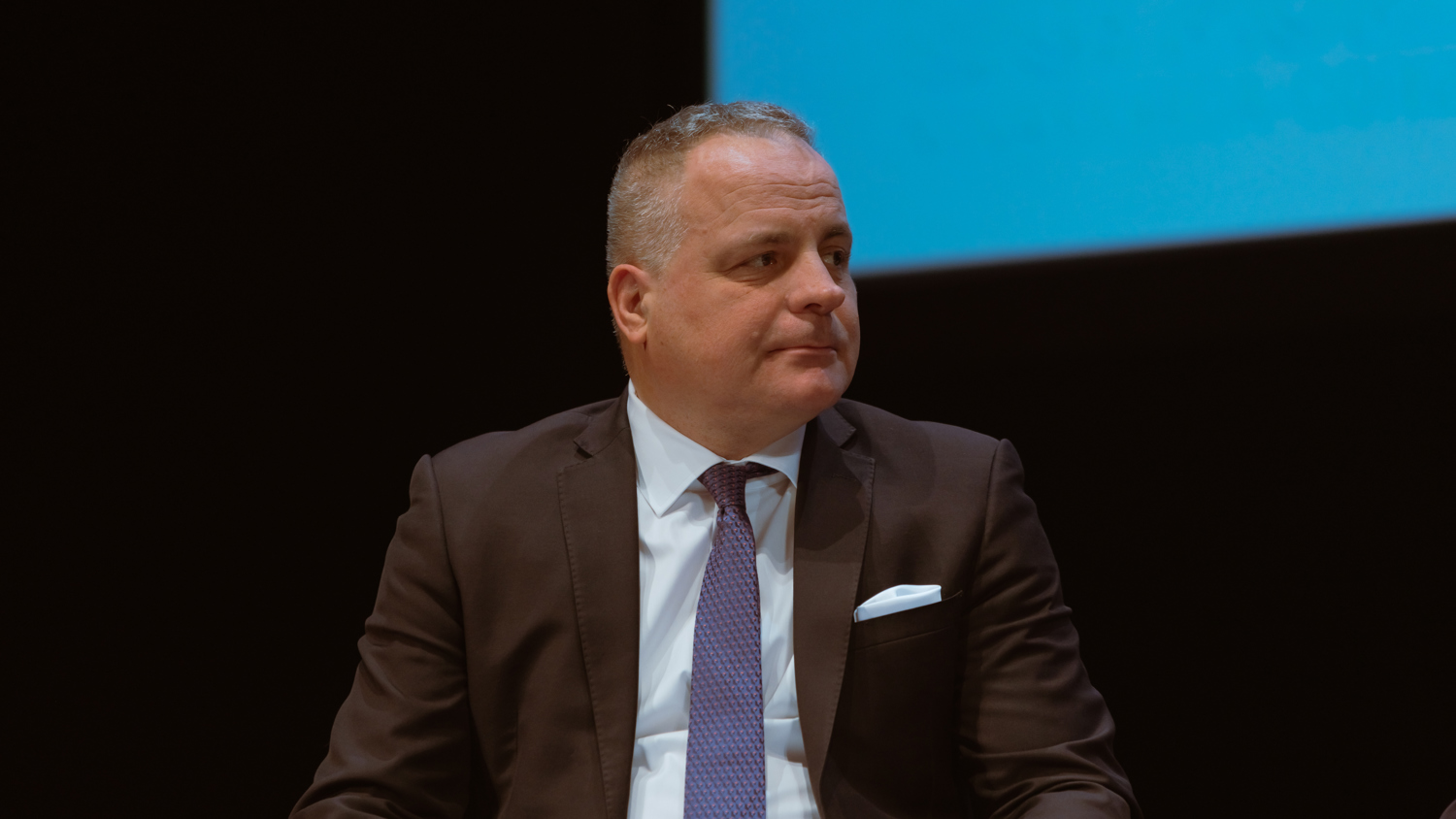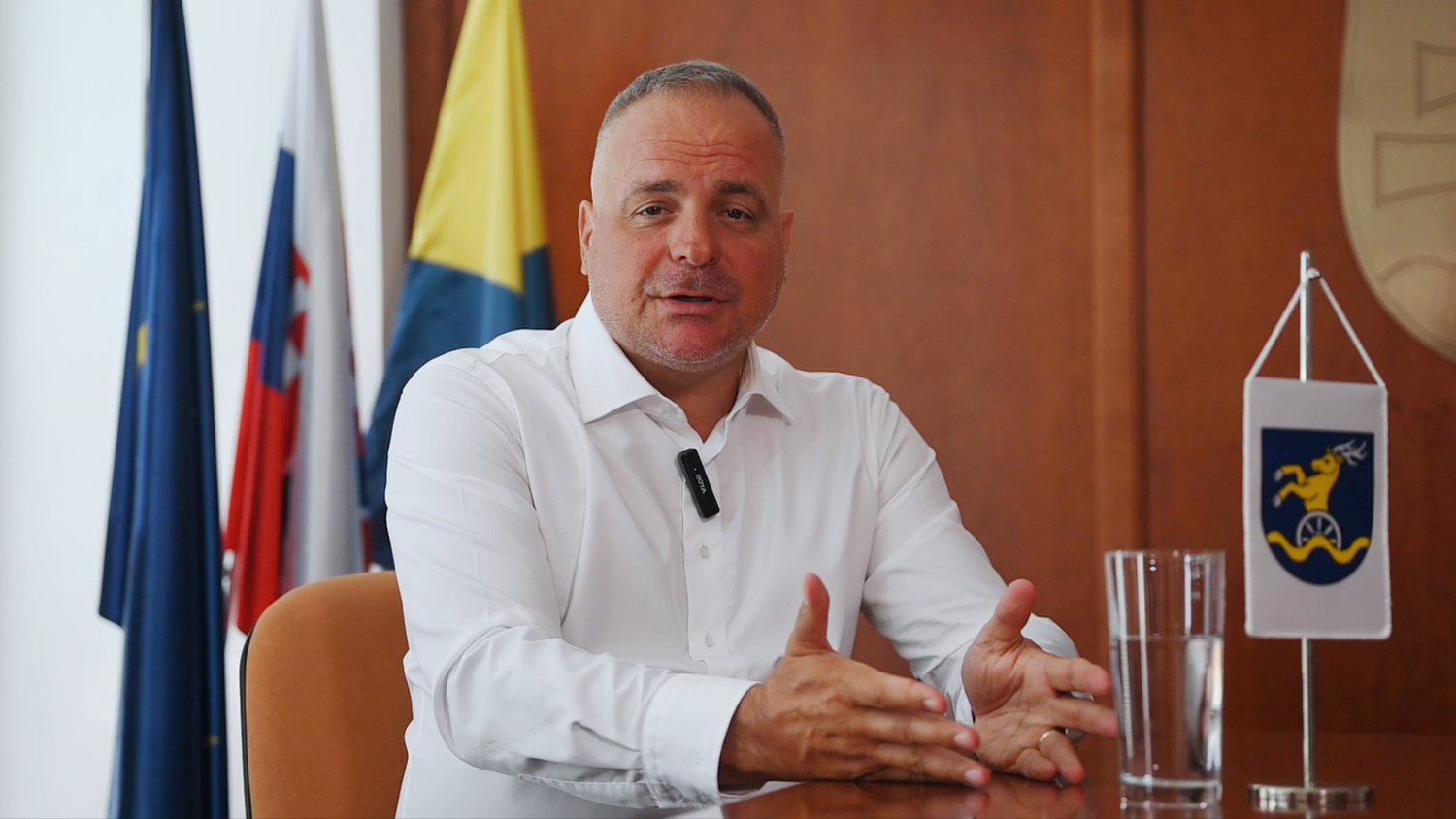
‘Cohesion and cooperation are the DNA of the European project’: Juraj Droba on how Interreg supports regional communities
Watch first: Key answers in two minutes
Before reading the full interview, watch this short video to hear Droba in his own words. This video includes a few selected answers from the full interview below. Scroll down for the complete transcript and additional insights.

Below is the full interview with Juraj Droba, where he expands on the video insights with in-depth answers about cross-border cooperation, EU partnerships, and how Interreg has improved the Bratislava region.
How do you see your region’s role in supporting European cooperation, particularly through your involvement in various Interreg programmes?
Because of our unique location, right on the borders with Austria and Hungary and very close to the Czech Republic, cross-border cooperation is a natural part of our daily life. It's how we grow, how we solve problems, and how we connect our communities.
Thanks to Interreg, we have implemented a number of great projects together with partners from Vienna, Lower Austria, Burgenland, and Győr-Moson-Sopron.
I think what makes Interreg so valuable is that it gives us a space to turn shared challenges - whether in transport, environment, or culture - into shared solutions. And by doing that, we’re not only improving infrastructure or services for our citizens; we’re also building trust, creating friendships, and reinforcing our common European identity.
What positive impact has Interreg cooperation had in the Bratislava region?
I believe that Interreg is the most tangible and visible expression of European integration, which our citizens perceive in their daily lives, and which makes them feel European.
In my region, Interreg has brought tangible benefits through practical and people-focused cross-border projects.
Some of the projects I’m very proud of are the Freedom Cycle Bridge and the Vysomarch Cycle Bridge over the Morava River, linking Slovakia and Austria. The Morava River, due to the lack of cross-border connections, represents a natural barrier in the border region. Today, these bridges invite people to come together, to cycle, walk, visit neighbours, and feel part of a shared space.
Another successful project is a complete reconstruction of the historic manor house and the adjacent garden in Modra, a national cultural monument. Thanks to cross-border cooperation and support from Interreg, we were able to restore this beautiful monument and give it new life and traditional cultural purpose.
Bratislava is also the managing authority for the Interact programme, which supports all Interreg programmes across Europe. What does hosting Interact mean for your region, and how does it fit into your broader European agenda?
Interact plays a key role in enhancing territorial cooperation and fostering collaboration across borders. Under the leadership of Director Petra Masácová, it is doing an excellent job in promoting multilevel governance in practice.
Hosting Interact managing authority within my administration in Bratislava, is something we’re very proud of. It puts our region right at the centre of the European cooperation.
For my region, it means we’re not only benefiting from European cooperation - we’re helping to drive it and shape its future.
Interreg projects in action
Many Interreg projects focus on practical, local benefits. Why is it important for political leaders like you to be involved at both the local and European levels?
For me, real impact only happens when political leaders roll up their sleeves - both at home and in Brussels.
By staying actively involved on the ground, we can identify challenges early, bring key partners together, and ensure that projects stay on track and deliver results. But many of these successes wouldn't be possible without strong involvement at the EU level.
As a member of the CoR - where I serve as Head of the Slovak National Delegation and Vice-Chair of the COTER Commission - I actively work to ensure our priorities are heard and reflected in EU decision-making.
Equally important is bringing local experience back to the EU level - sharing what works and what doesn´t, and what are the real needs of our territories. That’s how we build a Europe that truly reflects its regions. Saying that, I would like to highlight the outstanding work of our Representation in Brussels.
Connecting local and EU-level leadership
How does your role at the Committe of the Regions help you connect regional needs with EU-level decision-making?
As Second Vice-Chair of the COTER Commission, I am actively involved in shaping policies that are crucial for our cities and regions, such as cohesion policy, EU funding, cross-border cooperation and broader territorial development.
Cohesion and cooperation are the DNA of the European project, and regions and cities are at its core. To ensure EU policies succeed on the ground, we need to strengthen the involvement of local and regional authorities.
Every day, we see how EU policies impact people’s lives, and I believe those policies are most effective when they reflect the realities on the ground. That’s why I work to ensure that the voices of our regions and cities are heard clearly in Brussels.
What are some of the key priorities that COTER Commission is currently working on, and how are these relevant for regions like Bratislava?
Right now, COTER is working intensively on several key priorities that are especially relevant in today´s rapidly changing and uncertain context. We face challenges related to the green and digital transitions, demographic shifts, or geopolitical tensions.
One major area of focus is, of course, the future of the EU budget and cohesion policy. These discussions are critical, and it’s essential that regional and local perspectives are not only heard but actively shape the direction of these policies. Place-based solutions, partnership and multilevel governance are essential to delivering results that truly matter to people.
For the Bratislava Region, this means securing the support needed to address growing challenges - from access to health and social care services to a huge infrastructure debt or pressing climate issues.
That is also what I advocate for in Brussels. Metropolitan regions like ours have very specific needs, and we rely on EU support to address them effectively.
The EU is emphasising green and digital transitions. How do you see Interreg programmes helping regions turn these big priorities into concrete projects and partnerships that bring tangible results?
The green and digital transitions are big ambitions, but they only become real when they’re turned into local actions. That’s where Interreg programmes play such an important role. They help our regions not only to keep up with these transitions, but also make the EU’s green and digital goals more tangible to our citizens.
A great example from my region is the project of Econcetre in Čunovo, which we developed through cross-border cooperation with our Hungarian and Austrian partners. It’s a place where environmental education, community engagement and innovation come together. It shows how sustainability and learning can go hand in hand – and how we can inspire people to think and act green.
The future of Interreg after 2027
At the Interreg GO! high-level event held earlier in March on the future of Interreg, you spoke in your role as Second Vice-Chair of the COTER Commission. Looking back, what stood out to you from the event in terms of the visibility and future of Interreg cooperation?
What stood out most was the clear, shared commitment among all participants to strengthen cross-border cooperation as a core part of the European project.
The Interreg GO! event brought together regional and local leaders, high-level EU institutions representatives, and project partners who all recognize how vital Interreg is – not only for addressing common challenges, but also for fostering trust, cohesion, and a true sense of European solidarity across borders.
It was truly encouraging to see how much visibility Interreg is gaining. Now, we must build on this momentum. As policymakers, it´s our responsibility to ensure that Interreg remains high on the EU agenda after 2027.
Looking ahead, what would you like to see in the next generation of Interreg and EU regional programmes after 2027?
Looking beyond 2027, I would like to see an Interreg that is simpler, flexible, and truly responsive to local and regional needs.
To make this work, regions and cities must receive adequate technical and administrative support. At the same time, we should encourage more regions to actively engage in cross-border cooperation by removing legal and administrative barriers, simplifying procedures, and making participation easier.
Within the broader framework of post-2027 cohesion policy, our strategic objective is clear: to maintain a strong European Territorial Cooperation (ETC) and to increase its funding, particularly for the cross-border cooperation strand.
Ultimately, the success of the next generation of regional programmes will depend on one key factor: the active involvement of local and regional authorities.
A final message on cooperation
Finally, what message would you share with people working in Interreg programme staff, project partners, or newcomers thinking of applying - about the value of cooperation across borders?
My message is simple: cooperation works, and it is Europe’s greatest strength. Interreg is one of Europe’s great success stories, showing that when we break down barriers and work together, we can solve challenges more effectively.
Interreg has shown time and time again that when regions collaborate, the results are stronger, more innovative, and more connected to what people actually need.
I would also say: don’t be afraid to get involved. Even if you’re new to the programme or come from a smaller municipality, there’s a place for you. The process can be complex, yes - but there’s support, and there’s a community of partners willing to share experience and work with you.
At the end of the day, Interreg is about building trust and real partnerships. That’s something we need now more than ever in Europe.
Juraj Droba’s experience shows how Interreg cooperation isn’t just a policy - it's a lived reality that strengthens communities, improves lives, and brings Europe closer together.

